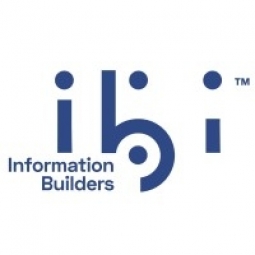实例探究.
添加案例
我们的案例数据库覆盖了全球物联网生态系统中的 22,657 家解决方案供应商。
您可以通过筛选条件进行快速浏览。
Download Excel
筛选条件
-
(6,653)
- (2,601)
- (2,127)
- (945)
- 查看全部
-
(5,642)
- (2,469)
- (1,692)
- (826)
- 查看全部
-
(5,571)
- (2,178)
- (1,766)
- (643)
- 查看全部
-
(5,247)
- (2,179)
- (1,715)
- (1,321)
- 查看全部
-
(2,881)
- (1,448)
- (574)
- (376)
- 查看全部
- 查看全部 15 技术
- (1,985)
- (1,985)
- (1,915)
- (1,679)
- (1,629)
- 查看全部 42 行业
- (8,728)
- (4,742)
- (3,618)
- (3,233)
- (2,947)
- 查看全部 13 功能区
- (3,304)
- (2,787)
- (2,603)
- (2,006)
- (1,630)
- 查看全部 129 用例
- (13,581)
- (5,296)
- (4,272)
- (3,520)
- (2,856)
- 查看全部 9 服务
- (504)
- (432)
- (416)
- (382)
- (301)
- 查看全部 1083 供应商
Selected Filters

|
Stroock 案例研究
Stroock 是一家领先的金融机构,它希望启用 Microsoft Office 365 等云服务,同时确保敏感数据得到保护。他们面临着跨云和 Web 的碎片化可见性和控制,并且存在敏感数据丢失和不合规的风险。该公司还面临着部署和管理独立且不一致的数据丢失防护 (DLP) 策略的复杂性和额外成本,以保护跨 Web、云和网络的客户数据。他们现有的 Web 代理解决方案无法满足组织不断变化的需求。由于员工遍布各地,用户直接访问互联网并绕过安全边界。用户还在个人和移动设备上访问云服务,除了浏览器之外,还使用本机应用程序和同步客户端。他们的传统 Web 代理工具无法识别大部分此类流量。
|
|
|

|
大宗商品交易商利用人工智能威胁检测找到最佳解决方案
大宗商品贸易公司 ED&F Man Holdings 在降低网络安全风险方面面临巨大挑战。几年前发生的一起安全事件警示人们,网络攻击越来越猖獗。一项独立评估表明,该公司需要大幅加强其网络安全流程、工具和人员。该公司进行了彻底的安全转型。Carmelo Gallo 接任网络安全经理,负责保护这家业务遍及 60 个国家、市值 100 亿美元的公司的运营。对下一代安全技术、集成和自动化的关注迅速加速了公司的安全成熟度。
|
|
|

|
INDEVCO 依靠 Vectra 实现全面可视性和主动威胁检测
INDEVCO 是一家跨国制造和工业咨询集团,在检测内部威胁、了解其网络以及维护网络卫生方面面临挑战。他们拥有开源安全信息和事件管理 (SIEM) 解决方案以及端点检测和响应 (EDR) 解决方案,但这些还不够。该公司需要一种解决方案来帮助他们更好地保护数据并确保其在全球 38 家制造工厂和 38 家商业公司中的运营顺利运行。
|
|
|

|
Vectra 阻止了欧洲最大的连锁药店之一的数据泄露
ROSSMANN 是欧洲最大的连锁药店之一,在识别其网络内部威胁方面面临巨大挑战。由 Daniel Luttermann 领导的 IT 安全团队负责加强公司的安全态势,以在网络外围和网络内部捕获网络攻击者。在评估供应商之前,ROSSMANN 进行了一次红队练习,以识别潜在的安全弱点和漏洞。这次渗透测试的结果用于在概念验证 (POC) 测试阶段评估供应商。该团队最终选择了多种解决方案,其中包括 Vectra® 的 Cognito® 网络检测和响应 (NDR) 平台。
|
|
|

|
Seacoast Bank Improves Business Process Efficiency Using a Logical Data Warehouse
Seacoast Bank, a growing community bank, faced a challenge with its operational data residing in a hosted data warehouse environment. There were many data silos that existed outside of the hosted platform and adding new sources of data or enriching the hosted data was not possible. The bank wanted to enhance the reporting experience for the departmental users. In the past, business users had to request custom static reports from the IT team, for operational purposes. These ad-hoc, manual reports used to get created as PDF or Excel files, making the reporting process extremely inefficient and outdated. Seacoast wanted its business users to interact directly with the data in a self-service manner, so they could create any type of custom report, based on the company's changing needs.
|
|
|

|
Reintegra Leverages Denodo Data Virtualization to Increase Debt Location Rate to %5, Improve Productivity of Their Search Process by 40x, Increase Agent Capacity by over 50x (from 15-20 to over 800 Files an Hour)
Reintegra, a part of the Santander Group and a leader in collection management in Spain, was facing a significant challenge due to the economic crisis and a fall in consumer spend. The financial impact of delayed collections was growing, imposing a financial cost of over 0.5% on a company's invoicing. In addition, such delays were the cause of 25% of bankruptcies. With over 50% of invoices paid late, efficient collections management and debt recovery became crucial for the company's well-being. Reintegra needed to automate their search process for information regarding debtors, especially when trying to locate untraceable contacts. This task was accelerated by identifying valid telephone numbers and enabling direct contact. However, before the implementation of Denodo Data Virtualization, this task was carried out manually by Reintegra agents, resulting in significant resource investment, both in time and money.
|
|
|

|
Large Healthcare Provider Leverages the Denodo Platform to Streamline Operations
The healthcare service provider decided to replace its main patient information system with a completely new system. This was going to be an expensive project that could span a number of years. As part of this initiative, the company also decided to modernize its data infrastructure built around an enterprise data warehouse. It took the company’s IT operations team a significant amount of time to implement changes to this infrastructure, which impeded the company’s overall agility as well as its ability to test new functionality. In addition, it was a batch-oriented infrastructure that furnished nightly reports. The company needed a solution that would enable the new infrastructure to seamlessly support both the dimensionally modeled enterprise data warehouse and the new transactional system, enabling both to work in tandem.
|
|
|

|
Data Virtualization Streamlines the Data Infrastructure at AXA XL
AXA XL's data management architecture was extremely complex, with multiple operational source systems and multiple stakeholders from different business groups using their own BI tools to access data. The company relied on ETL processes to integrate the data, leading to excessive replication. This resulted in latencies in data delivery and inconsistencies between different data sets, creating multiple versions of the truth. Outdated or unreliable figures were reported to stakeholders. There was also a lack of data access control, with no way to trace who accessed what data, or when. Without role-based access rules, anyone could access any data, regardless of whether or not they had the authority. This made the entire data management architecture extremely vulnerable to security breaches and exposed the company to the risk of falling out of GDPR compliance.
|
|
|

|
Data virtualization powers the data revolution at Festo
Festo, a leading supplier of automation technology and technical education, was looking to optimize operational efficiency, automate manufacturing processes, and deliver on-demand services to its business consumers. This included finding smarter ways to streamline how the company aggregates and analyzes data. Festo also needed its business users to become self-sufficient with reporting and analysis and reduce their reliance on IT for preparing and surfacing the data they need. In addition, Festo's business teams had launched strategic projects to maximize energy efficiency, and they needed to be able to provide instant visibility on energy usage directly to the shop floor teams. However, Festo was challenged in finding an agile and robust way to integrate the data from the existing silos, which included the data warehouse, machine data sources, and other sources, in a way that would reduce the reliance on IT by the business users while providing the quick turnaround and flexibility that the users were demanding.
|
|
|

|
GetSmarter Leverages the Denodo Platform to Improve Time-to-Market and Customer Service
GetSmarter, a digital education company, was experiencing rapid growth due to the popularity of its university accredited online courses. As the company's customer base and operations grew, so did its data repositories, which contained a variety of functional data covering marketing, finance, courses, students, and many other domains. With data spread across so many heterogeneous systems, business users could not perform a unified analysis of the enterprise data or achieve a single version of the truth. The company's reporting tools now needed to talk to many databases instead of just one. GetSmarter needed a way to accommodate the many-to-many reporting tool and avoid having to manage multiple database connections.
|
|
|

|
ABN AMRO Verzekeringen Advances its Data Strategy with the Denodo Platform and Microsoft Azure
ABN AMRO Verzekeringen, a joint venture of NN Group and ABN AMRO Bank, was struggling with its classic data warehouse architecture. The company had a growing need to become data-driven, but the existing data warehouse was increasingly unable to meet this demand. The company had to report to various stakeholders, including internal business units and the two organizations of the joint venture, as well as various regulators. The demand for reliable, frequent, and up-to-date data had significantly increased within the organization. The existing data warehouse made it difficult to combine information from different source systems and create up-to-date reports. The business units only received monthly updates on the progress of campaigns or the quality of services. The final push for change came at the end of 2018 when it became clear that support for the tooling and database of the current data warehouse would no longer be provided in the foreseeable future.
|
|
|

|
Sicredi Enables Data Democratization and Self-Service with the Denodo Platform
Sicredi, formed by 108 credit unions, has a large number of data systems and platforms that make up the backbone of its IT infrastructure. Each individual credit union, besides wanting to ensure that it was serving unique data needs for informed decision-making, also wanted to improve its time-to-market. Most data needs at Sicredi are fulfilled through dashboards, reports, and offline files, all of which is leveraged by data analysts to generate insights. Due to the siloed nature of these data assets, data analysts have been relying on extract, transform, and load (ETL) processes to consolidate data from different data systems, including a data warehouse, a data lake (on AWS), and several sandboxes, to create local data repositories, which takes a lot of data analyst time and requires additional storage systems. Most of the organization’s data was stored in the data warehouse and data lake, which delivered dashboards and reports to business intelligence and analytics applications. Sicredi needed an integrated data platform that could scale at demand and promote both data democratization and self-service for data and analytics, without the need to replicate data. Sicredi also wanted to implement data governance throughout the organization.
|
|
|
|
|
Customer Success Story: Cork County Council
Cork County Council, the largest county in Ireland, was tasked with reducing energy consumption by 30% by 2020 as per a directive from the European Union (EU). The council treats and supplies water to approximately 40,000 non-domestic customers and 100,000 homes across the county. Due to its size, Cork County is divided into four zones– North, South, East, and West Cork–which makes data aggregation challenging. The council was using manual data entry with Excel to produce the leakage figures required by the Department of the Environment. However, with four zones to maintain, this method made it too difficult to efficiently calculate leakage figures. Furthermore, the average daily volume of water produced in Cork County is estimated to be well over 150,000 yd3 /day with the total length of water in the Public Water Supply Schemes estimated to be 3,500 miles long. The number of yards from which to retrieve that data continues to increase – approximately 391 DMAs with up to 3 yards per DMA. With such a vast supply network, the Council could not meet the new EU directives on energy consumption by continuing to use traditional manual data collection methods.
|
|
|
|
|
Customer Success Story: BAA/Heathrow Airport T5 Terminal
The T5 Terminal at London’s Heathrow Airport was one of Europe’s largest construction projects, funded by BAA at £4.2 billion. The terminal was designed to be a fully integrated facility, monitored through a central Terminal Service Centre (TSC) and mobile devices. A common user interface was needed to access heating, ventilation, lighting, fire, elevator, CCTV, and security systems as well as to centralize alarm management and automate system interaction. At its opening, T5 included over 50 different systems, producing a massive tag count of over 3 million. In addition, by using open industry standards based on OPC, the resulting architecture has been designed to provide flexibility for future expansion and integration, as required by the customer.
|
|
|
|
|
Customer Success Story: AES Wind Generation
AES Wind Generation, a division of AES, an international power company, was in need of a robust system that could perform calculations in real time from both user input and data coming from the field. They needed a system that could connect via open standard protocols and provide both instantaneous and aggregate data for monitoring and reporting. The company was also looking for a system that could be implemented quickly and efficiently, given the high amount of repetition involved with each unit having identical inputs and outputs. Additionally, they wanted a system that would fit into a virtual machine environment to facilitate backup and recovery in case of a hardware or software failure.
|
|
|
|
|
Customer Success Story: City of Lubbock Water Utilities Department
The city of Lubbock, located in the arid Texas panhandle, faces significant challenges in managing its water resources. With a growing population, the city must draw water from multiple sources, including Lake Meredith, groundwater from aquifers, and well-fields operated by the Canadian River Water Authority. The Lubbock Water Utilities Department is responsible for managing all aspects of the city's water needs, including water collection, water and wastewater treatment. The department needed a solution that would allow it to efficiently monitor and control all aspects of its water treatment plant, wastewater treatment plant, and well-field. The solution needed to provide real-time data on critical process variables, including chlorine, turbidity, suspended solids, and oxidation-reduction potential (ORP).
|
|
|
|
|
Customer Success Story: ContourGlobal Maritsa East 3 Thermal Power Plant
Maritsa East 3 Thermal Power Plant (TPP) is the third largest power plant in Bulgaria, generating 30 percent of the country's electricity. The plant was built by Russia between 1978 and 1981 and supplies electricity grids in both Turkey and Bulgaria. However, the plant was in need of large-scale modernization and upgrades, an increase in output and power capacity, and meeting the European ecological requirements. The final part of the project was the integration of all control systems on a single platform. EXBIT was chosen as the developer and system integrator for the Control and Monitoring Integration System. The objectives for the Maritsa East 3 TPP project included large-scale modernization and upgrades, an increase in output and power capacity, and meeting the European ecological requirements.
|
|
|
|
|
Customer Success Story: Dalmacijacement d.d.
The Republic of Croatia, in cooperation with The European Union, introduced legislation for environmental protection through continuous emissions monitoring. Dalmacijacement d.d. set out, with assistance from ECCOS inženjering, to bring all of its factories under compliance, with the goal of creating a continuous emissions monitoring system (CEMS). Manufacturing facilities are often assumed to be sources of pollution, so a system was required that could continuously monitor emissions, graphically depict these emissions, normalize the measurements, archive measured and calculated (i.e. normalized) values, inform the public through corporate Web pages and, most importantly, create daily, monthly and yearly reports in Microsoft Excel and XML-formats that adhere to the legislative requirements.
|
|
|
|
|
Customer Success Story: Longmont United Hospital
Longmont United Hospital, located in Longmont, Colorado, is a world-class healthcare facility that is rated among the top 10% of hospitals for patient experience in the United States. In January 2000, the hospital opened a five-story patient tower with new private rooms and soothing environments for patients and their families. The hospital is committed to providing compassionate care, which is reflected in its building management system. However, as healthcare has advanced, Longmont United has had to expand and update its facilities. This has required the hospital to upgrade to the latest innovations in building automation and monitoring solutions.
|
|
|
|
|
Customer Success Story: Lincoln Wastewater System
The Lincoln Wastewater System (LWWS) in Lincoln, Nebraska, needed a comprehensive solution to ensure the proper collection and treatment of current and future wastewater flows in an environmentally sound and cost-effective manner. The system comprises 970 miles of sanitary sewer lines, 14 pumping stations, and two municipal treatment plants, handling up to 23.5 million gallons of water per day. The challenge was to install a system that could control all manual and automatic aspects of each process, including raw water pumping, flow dispersal, aeration basin dissolved oxygen monitoring, return activated sludge flow set points/rates, and effluent flow disinfection/totalization. The system also needed to control solid waste removal from the treatment facility. In addition, the system had to be secure and allow managers to monitor any functions that the operators monitor.
|
|
|
|
|
Customer Success Story: KHS Maschinen
KHS Maschinen, a market leader in the deployment of Aseptic Cold Filling (ACF) applications for the beverage market, was looking for a solution to control its applications and machines and to visualize the entire ACF process. The ACF process allows for fruit juices to be filled into PET bottles at a temperature of only 68 Deg F (20°C), eliminating the need for preservatives and improving product quality. However, this process required a sophisticated solution for scalability, graphic capabilities, and modularity for machine control and visualization.
|
|
|
|
|
Customer Success Story - PRAKAB a.s.
PRAKAB a.s., one of the largest producers of wires and cables in the Czech Republic, embarked on an extensive investment program to modernize its plant and increase production. This involved the launch of new cable production lines and the reconstruction and maintenance of management systems for existing production lines. The company's manufacturing processes involve multiple machines, including extruders, decoilers/unwinders, rewinders, heating/cooling devices, and PVC granulate dosers. An average of 300 I/O points are incorporated into each of PRAKAB’s 15 cable and wire manufacturing lines. The company mainly uses Siemens S7-300 PLCs that provide data to the SCADA system over PROFIBUS and Ethernet networks via OPC communication standards.
|
|
|
|
|
Customer Success Story - VIA University
VIA University, established in 2008, has grown significantly over the years, expanding from 38 sites to 18 sites across Denmark. As part of this expansion, the university began construction of new facilities and sought new options for building management solutions. The university required a software vendor who could provide a cost-effective, open building management solution for their Aarhus N and Aarhus C campuses. The primary concern was the monitoring and control of campus buildings’ daily operation, especially the comfort of occupants, as the university believes that an optimized indoor climate is the best environment for learning. Minimizing operational cost was also a factor in the school’s decision. The university has its own building management user’s manual, revised once or twice a year, which is considered essential to optimal operations. With this in mind, the school sought a software vendor that would reduce complexity in operations, while ultimately reducing associated costs.
|
|
|
|
|
Customer Success Story: Transneft Russian Pipeline
Transneft, Russia’s largest oil pipeline company, manages the world’s largest oil pipeline that extends over 48,000 miles from Siberia to the Baltics. The pipeline transports 420 million tons of oil a year through severe environments. The installation project involved installing over 400 pumping stations and 1000 holding tanks in 101 locations supplying 35 refineries. The challenge was to monitor and control this extensive pipeline system, which is responsible for transporting 99.5% of all the oil used in Russia. The system supplies 35 different refineries with their daily crude oil and provides both Europe and China with oil products. The pipeline system required a centralized dispatch and SCADA system to monitor the 400 pumping stations and 1,000 large oil tanks in 100 different tank farms.
|
|
|
|
|
Customer Success Story - ScholleIPN
ScholleIPN, a global packaging solutions provider, faced challenges in managing its complex and high-output production process across its 14 global sites. The company had hundreds of data islands, with each local site calculating asset performance and quality metrics differently, leading to inconsistencies. The lack of a consistent platform made system improvements unscalable across the globe. The company's Continuous Improvement (CI) Team identified a need to replace the culture of local individualism with global collaboration, while still supporting certain local autonomous needs.
|
|
|
|
|
Aksa Natural Gas Distribution, Inc. Case Study
Aksa Natural Gas Distribution, Inc. sought an automation system for its Natural Gas Regulating and Metering Stations (RMSs), which are divided into three separate types (A, B, C) according to pressure classes. These stations reduce and regulate downstream pressure, measuring the quantity of energy transferred from Aksa’s natural gas transmission system to medium pressure networks or to consumers who are connected directly to the transmission system. They also add the distinctive odor to the gas, providing prompt detection of any leakages, as required by national and international safety standards. Aksa required the stations’ data to be gathered by a central HMI/SCADA system via OPC servers and PLCs. Alarms are generated from critical values within the received data. Aksa required that their selected alarm management system be able to integrate with their RMS system, as well as to provide notifications. The alarm management system needed to handle thousands of tags, with each tag’s status made available to multiple locations, and if necessary, allow for expected intervention within 15 minutes.
|
|
|

|
ABC Financial Gets Quick Results With Information Builders
ABC Financial Services, a leading provider of billing and club management solutions, was facing a challenge in providing its customers with flexible and user-friendly analytics capabilities. The company's existing system made it difficult for club owners to extract specific information about enrollment trends, cash flow, and campaign management scenarios. ABC Financial wanted to give club owners the flexibility to slice-and-dice performance metrics, but they didn’t want to burden users with a cumbersome reporting environment. ABC customers wanted more flexibility for visualizing and summarizing data.
|
|
|

|
Ace Hardware Remodels With Information Builders’ Guided Self-Service Analytics
Ace Hardware, the largest retailer-owned hardware cooperative in the U.S., was facing a challenge of managing the vast amount of information required to keep the company’s supply chain running smoothly. The company needed to extend decision-making capabilities to a large base of users via data analytics capabilities that were easy to access, integrate, and use. The company was looking for a decision-making platform that could support thousands of users while easing development and offering robust self-service capabilities. The platform needed to be 'ERP-savvy' and able to integrate various types of data into intuitive charts, graphs, and reports.
|
|
|

|
An Innovative Analytics Vision Becomes a Reality at Amerisure
Amerisure, a leading provider of property and casualty insurance, wanted to enhance company performance by leveraging the intelligence in their enterprise data to improve profitability and foster a more analytics-driven culture. The company's data was complex and spread across disparate systems. They needed a framework that would enable them to harvest the intelligence within that data. The company also wanted to provide its agency partners with analytics about their accounts that they otherwise would not have access to. Amerisure was also looking to make these capabilities mobile to further enhance customer service and increase client longevity.
|
|
|

|
Ameritas Leverages Pervasive Analytics to Transform Business
Ameritas, a company offering a wide range of insurance and financial products and services, was struggling with accessing, presenting, and analyzing key business information from a diverse back-end infrastructure. This included data from a mainframe administration system that encompasses sales, commissions, customer service, underwriting, and actuarial data. The company lacked a cohesive way to manage this data, which was crucial for making informed business decisions. Furthermore, Ameritas wanted to provide its 'information consumers' with an easy-to-use process for analyzing and retrieving information from the repository. It needed a solution that would allow access to information about company operations, products, and customers and make it accessible not only to IT professionals, but also to business users and policyholders.
|
|




